Ever wonder how coffee is farmed? Recently I had the pleasure of touring a small family farm plantation in Costa Rica and learned so much!
The farm I toured was called El Trapiche, which has to do with sugar extraction. Here they grow sugar cane, cocoa, coffee, and some lemons, arracache, and bananas. It is located near the mountainous cool region of Monteverde, near the central area of the country, not too far from the Arenal volcano area. Here we got to watch the sugar cane extraction process, make our own candy from scratch, watch the cocoa and coffee production process, and separate the cocoa powder from the cocoa butter direct from the plant. It was so fascinating!
This plantation has some banana plants primarily for crop rotational purposes, where it also helps to provide the coffee plants with proper balance of sun and shade. Here they grow three types of coffee: Arabica, Rubiaceae, and Liberica. This hilly region of Costa Rica can’t usually compete with the large scale coffee production in other parts of the world, so they focus more on quality than quantity. Liberica coffee makes up only 1 percent of the world production of coffee, but this plantation generally focuses on this to separate themselves by producing a small scale quality product.
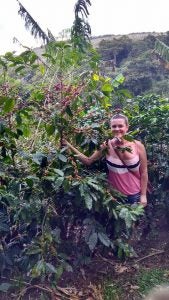
Did you know that every coffee bean is picked by hand? I was very surprised to learn about all the difficult manual labor involved in growing this popular crop; the most popular drink in the world. After learning about this difficult labor and low pay, it really makes you think twice about wasting this precious resource — try to not waste coffee or dump it down the drain! Below is a picture of the plants with the hand-picking baskets. Each one weighs 13 kilos and takes a good picker about an hour, to which the workers are paid about $3 an hour.
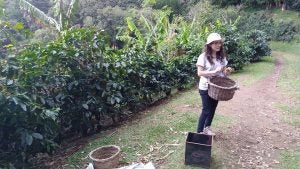
So coffee plants take on average three to four years to produce their first harvest, and they look like a deep red cherry when they are hand-picked. The coffee crop blooms from February to April, and harvest is from October to March. On this particular Costa Rican plantation, they will harvest for four years before the coffee plants are cut down to regrow. They use coffee shells for mulch to protect against weeds and have some insect traps; they can also spray against pests or fungus. Fungus can happen if the plant receives too much sunlight.
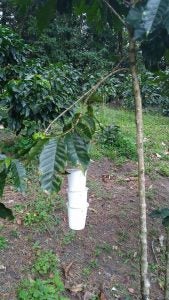
Each coffee “cherry” has two beans inside that are off-white in color. After they are picked, the drying, peeling, and roasting process begins. On this plantation they have three types of processing: natural which takes three weeks to dry, fully washed process which takes one week, and the honey process which takes about two weeks and has a sweeter flavor. They sit inside a greenhouse-type room in a controlled environment at 10 to 12 percent humidity, as shown here:
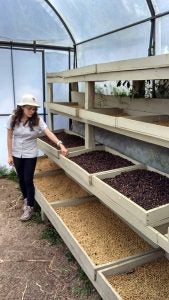
Next, they use machinery to peel, press, and sort the coffee. Here the beans are peeled, washed, and peeled again.
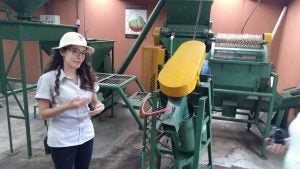
Then they are sorted by size, weight, and class. First class, second, or third. Most first-class coffee is exported to places like Japan, New York, or the Netherlands.
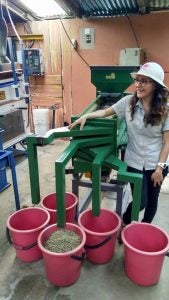
Next the coffee is roasted. This process takes about 50 to 60 minutes depending on whether it is a light or dark roast. There is not much difference in caffeine content among the roast varieties. (That is mostly marketing!) This process is closely monitored as a crystalization process is happening and the coffee must be cooled very quickly to not “overcook” the roasted beans, if you will.
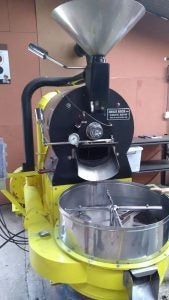
And the rest is history! The next time you enjoy a cup of coffee, think about the hard work that went into producing this popular drink for us all. Enjoy!
Michelle Miller, the Farm Babe, is an Iowa-based row crop and livestock farmer who works to bridge the gap between farmers and consumers. She is a writer and public speaker for agriculture and can be found on Twitter and Facebook.



